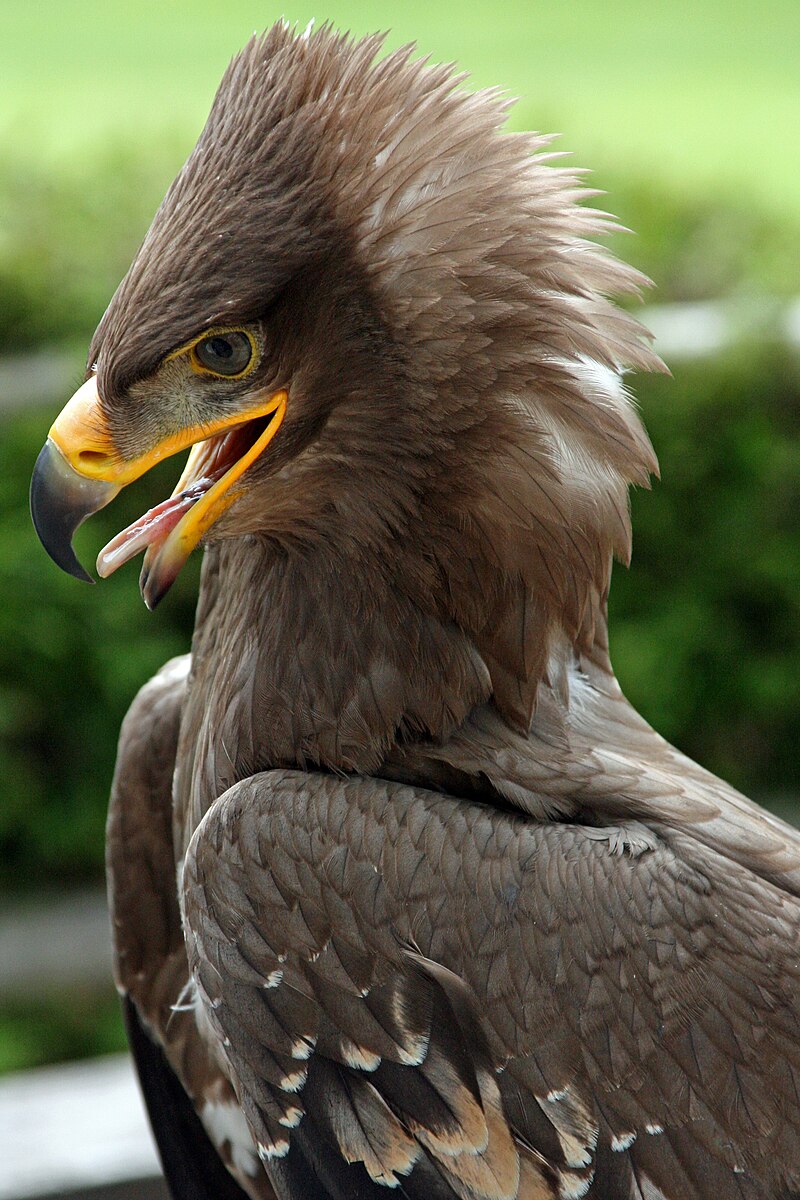Steppe eagles (Aquila nipalensis) are known for their impressive hunting skills and adaptability, but contrary to popular belief, they do not have the ability to turn their heads 360 degrees. While many birds of prey, such as owls, can rotate their heads to a significant degree, steppe eagles do not share this capability.
The Anatomy of Steppe Eagles
Steppe eagles are large birds of prey, with adults standing at around 20 inches tall and having a wingspan of approximately 48 inches. They are characterized by their dark brown upperparts, pale brown underparts with heavy, dark brown bars, and large yellow eyes. These birds are known for their long-distance migrations, with some individuals traveling thousands of miles between their breeding and wintering grounds.
Steppe Eagles’ Hunting Abilities
 Image source: Steppe Eagle by Fimb
Image source: Steppe Eagle by Fimb
While steppe eagles cannot turn their heads 360 degrees, they are still formidable hunters. They primarily feed on medium to large-sized birds and mammals, with some individuals also taking reptiles. When hunting larger prey, steppe eagles may return repeatedly to feed on their kill, consuming about half of the body before decomposition sets in.
Comparison to Owls
Unlike owls, which have a unique circulatory and nervous system adaptation that allows them to rotate their heads up to 270 degrees, steppe eagles do not possess this capability. Owls’ eyes are fixed in their sockets, and they rely on their ability to turn their heads to compensate for this limitation and maintain a wide field of vision.
Steppe Eagles’ Adaptations
While steppe eagles cannot turn their heads 360 degrees, they have other adaptations that make them successful hunters. Their keen eyesight, powerful talons, and sharp beaks allow them to locate, capture, and tear apart their prey with precision. Additionally, their long-distance migration abilities enable them to take advantage of seasonal changes in prey availability and environmental conditions.
Steppe Eagles’ Habitat and Conservation
Steppe eagles are found in various habitats, including grasslands, steppes, and semi-deserts, across Central Asia and parts of Europe. However, their populations have declined in recent years due to factors such as habitat loss, hunting, and poisoning. Conservation efforts are underway to protect these majestic birds and ensure their continued survival.
Conclusion
In conclusion, while steppe eagles do not have the ability to turn their heads 360 degrees, they are still impressive birds of prey with a range of adaptations that make them successful hunters. Their long-distance migrations, powerful hunting skills, and adaptability to different environments are a testament to their resilience and importance in their ecosystems.
References:
– https://birdsconnectsea.org/learn/birds-of-wa/bird-facts/owls/
– https://collections.dartmouth.edu/arctica-beta/html/EA08-11.html
– https://www.science.gov/topicpages/e/eagle%2Bsyndrome%2Bdiagnostic
– https://animalia.bio/ornate-hawk-eagle?category=3

